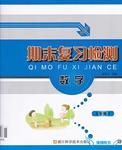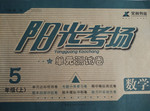题目内容
假定英语课上老师要求同桌之间交换修改作文,请你修改你同桌写的以下作文。文中共有10处语言错误,每句中最多有两处。每处错误仅涉及一个单词的增加、删除或修改。
增加:在缺词处加一个漏字符号(∧),并在其下面写出该加的词。
删除:把多余的词用斜线(\)划掉。
修改:在错的词下划一横线,并在该词下面写出修改后的词。
注意:1.每处错误及其修改均限一词;
2.只允许修改10处,多者(从第11处起)不计分。
The other day, some of my classmates and I took a bicycle trip along the “Ren Min Road”, where was specially built for people to relax ourselves. The scenery along the road was fascinating, with trees, flowers, hills and lakes on both side. We stopped by a lake for a rest, where a good many of people were playing happily. But something unpleasant catch our attention. There was rubbish here or there, and there were many plastic bags and bottles floated on the surface of the lake. Such beautiful place was so serious polluted. What a shame! In the end, we couldn’t help collecting the rubbish after we left.
 期末复习检测系列答案
期末复习检测系列答案 超能学典单元期中期末专题冲刺100分系列答案
超能学典单元期中期末专题冲刺100分系列答案 黄冈360度定制密卷系列答案
黄冈360度定制密卷系列答案 阳光考场单元测试卷系列答案
阳光考场单元测试卷系列答案 名校联盟冲刺卷系列答案
名校联盟冲刺卷系列答案
